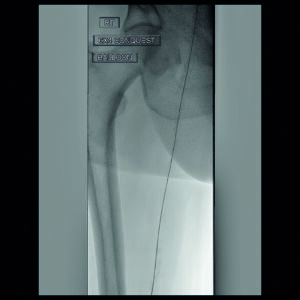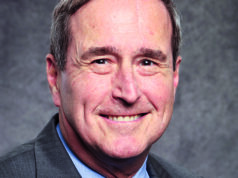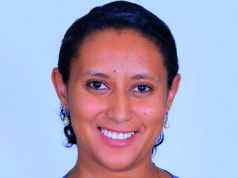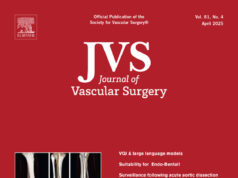
“Variability is a source of inferior quality, poor outcomes and harm,” says Anil Hingorani, MD, vascular surgeon at New York University (NYU) Langone in Brooklyn, speaking to VS@VAM ahead of Thursday morning’s VAM 2024 session on the past, present and future of radiation safety.
The session—which intends to improve access and address variability within radiation safety education—will feature talks on special concerns for staff, women and pediatric patients, and even new technologies that may enable vascular surgery to “move away” from radiation. It takes place from 7–8 a.m. (the West Building, Level 1).
Hingorani, who will moderate alongside Gale Tang, MD, associate professor and chief of vascular surgery at the University of Washington (UW) in Seattle, continues: “Radiation safety has been relegated to the purvey of each hospital—some have vigorous annual certification and exams; at some others they are practically non-existent.
“After looking over to see what some of our colleagues in other fields have established for education and certification in radiation safety for national standards, and examined the variability at our institution, I would suggest we need to establish minimum standards for the sake of our patients, our staff and ourselves. This course focuses on a key set of skills that all vascular practitioners should own.”
The session kicks off with a presentation on the relevance of radiation safety for the practicing vascular surgeon from Fernando L. Joglar, MD, associate professor of surgery at the University of Puerto Rico School of Medicine in San Juan. Subsequent talks include “Maximizing protection from radiation,” given by Melissa L. Kirkwood, MD, professor and chief of the Division of Vascular and Endovascular Surgery at the University of Texas Southwestern Medical Center in Dallas.
Discussing Kirkwood’s talk, Tang notes that the presentation will cover dose-sparing strategies and also review evidence around various pieces of protective gear that operators wear in order to minimize radiation exposure—something that, in her view, is “extremely practical for every trainee and practicing vascular surgeon to learn.”
Special concerns for women patients, staff and pediatric patients regarding radiation safety are next on the agenda, and will be outlined by Agelilki G. Vouyouka, MD, professor of surgery and radiology at Icahn School of Medicine at Mount Sinai in New York. Following this, a presentation from Peter A. Schneider, MD, professor of surgery in the Division of Vascular and Endovascular Surgery at the University of California San Francisco, will center around the As Low As Reasonably Achievable (ALARA) principle, and methods for “maximizing imaging while reducing radiation exposure.”
Fittingly, the final presentation will nudge audiences to consider the future outlook of radiation safety and education, with Andres Schanzer, MD, professor of surgery in the Division of Vascular and Endovascular Surgery at the University of Massachusetts Memorial Medical Center in Worcester, discussing the latest technologies in this space, and a possible “move away” from radiation further down the line.
“Vascular surgery is still undergoing the endovascular revolution,” says Hingorani. “Every couple of weeks, a new technology is being added to our armamentarium, often using fluoroscopy. Similarly to all technology, it is very useful but has to be used properly. This session focuses on using radiation safely to optimize outcomes and imaging.
“It will cover not only the present technology but also developing technology. These upcoming technologies have the potential to reduce radiation exposure, especially in complex cases. In addition, our future is our trainees. To make change, we need to focus on how to train the trainees in these important concepts.”












